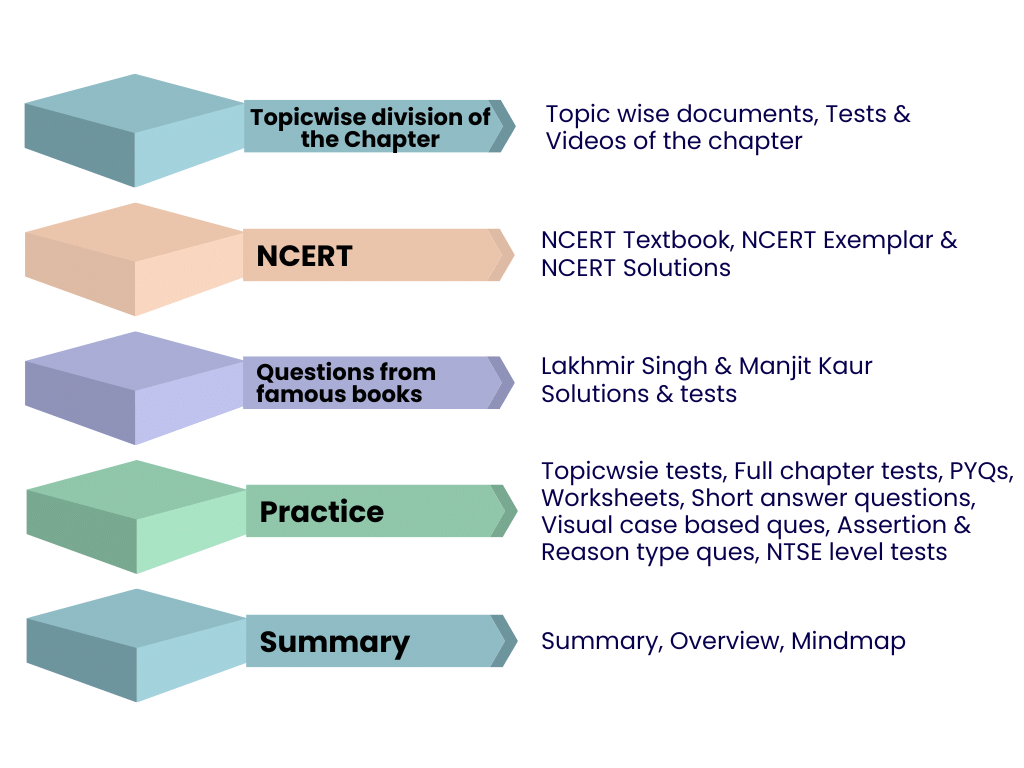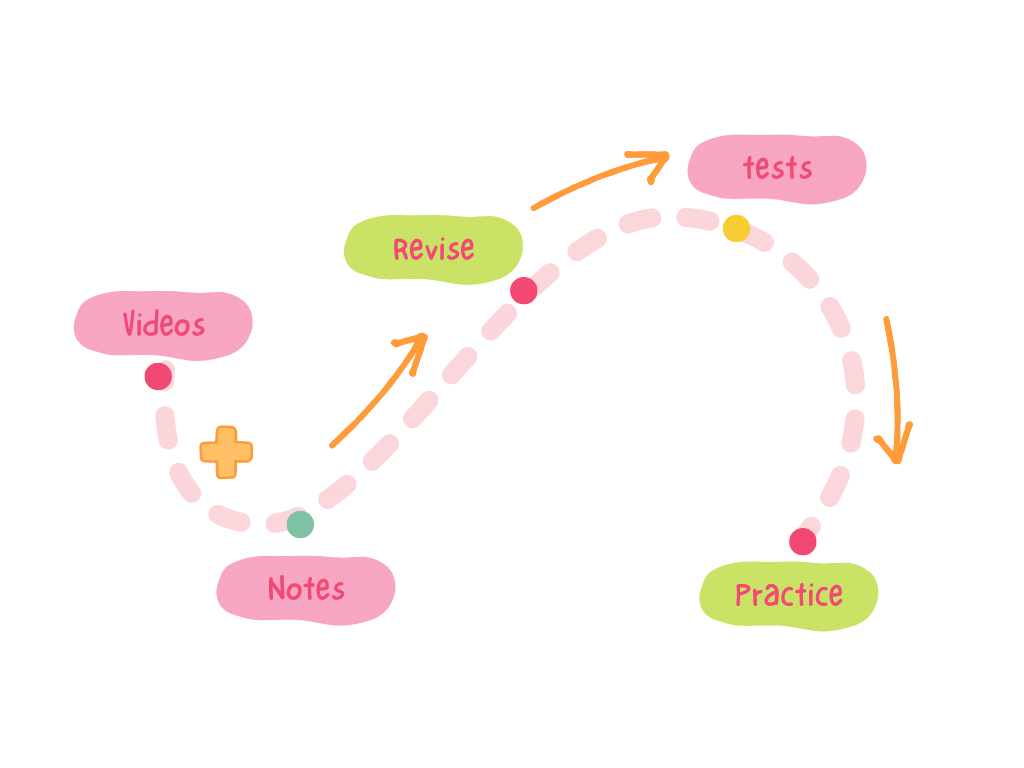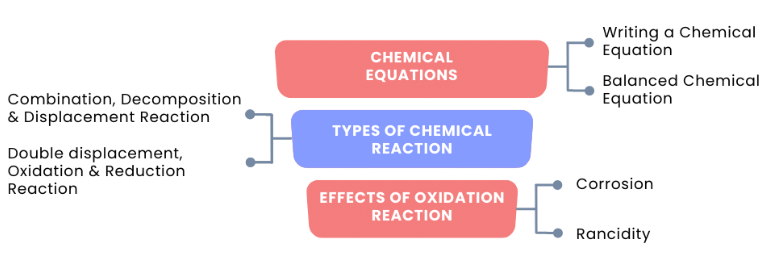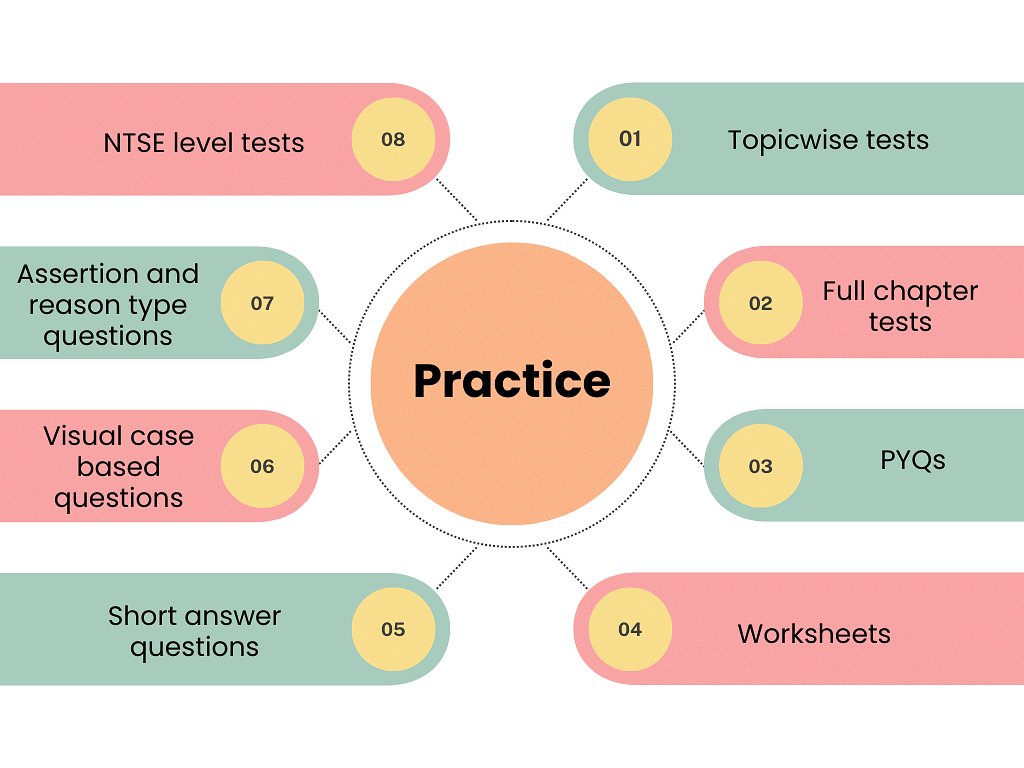Index: Chemical Reactions & Equations | Science Class 10 PDF Download
Have you ever witnessed a paper burning? An entirely white piece of paper turns into ashes after being completely burnt. This process is nothing but a type of chemical reaction only.
In this EduRev index document, you will get everything to understand the chemical reactions. It includes all of the information needed to comprehend the chapter as well as enough of practise material to help you study for the examinations.
In this chapter EduRev provides you with:

1. Topicwise division of the Chapter
You will get the notes, tests, and videos for each topic in the chapter in the Topicwise section. You can understand each and every topic in detail with the help of documents and videos. After reading the document and watching the videos for all the topics, you can revise it and start attempting tests to strengthen your practice.

The flowchart below is showing all the topics in the chapter Chemical Reactions and Equations:
1. Chapter Notes & Overviews
Understand the fundamentals of chemical reactions through comprehensive chapter notes and overviews:
- Chapter Notes: Chemical Reactions & Equations
- Overview: Chemical Reactions & Equations - 1
- Overview: Chemical Reactions & Equations - 2
- Detailed Explanation: Chemical Reaction & Equations
- Chemical Reaction & Equations
- Types of Chemical Reactions, Chemical Reactions & Equations
- Chemical Reactions & Chemical Bonding
2. Study Plans & Revision
Enhance your learning with visual and mnemonic tools designed to simplify complex concepts:
3. NCERT Resources
The NCERT textbooks are the most important for students to study in order to comprehend the concepts; since most questions only come from NCERT books, it is crucial for them to get a fundamental grasp of the chapter. EduRev offers NCERT textbooks for every chapter, answers to every NCERT question, and NCERT Exemplars as a whole. To read the NCERT content, click the links below.
- NCERT Textbook: Chemical Reactions & Equations
- NCERT Solutions: Chemical Reactions & Equations
- NCERT Exemplar: Chemical Reactions & Equations
- NCERT Based Activity: Chemical Reactions and Equations
4. Study Aids & Visual Resources
Enhance your learning with visual and mnemonic tools designed to simplify complex concepts:
- Mindmap: Chemical Reactions & Equations
- Flashcards: Types of Chemical Reactions
- Infographics: Chemical Equations
- Mnemonics: Chemical Reactions & Equations
- Cheat Sheet: Chemical Reactions and Equations
- PPT: Chemical Reactions and Equations
5. Key Concepts & Definitions
Master essential concepts and terminology:
- Important Equations and Definitions: Chemical Reactions and Equations
- Chemical Equations: Writing & Balancing
- Oxidation & Reduction
6. Questions from Famous Books
Lakhmir and Manjit Kaur's book is one of the helpful resources for students to read the theory and practise questions from it as it provides questions in abundance and simplifies theory. EduRev provides you with questions (with solutions) from not only the NCERT textbook but also from some famous books like Lakhmir Singh & Manjit Kaur from which questions are asked in the exams.
- Lakhmir Singh & Manjit Kaur Solutions: Chemical Reactions & Equations - 1
- Lakhmir Singh & Manjit Kaur Solutions: Chemical Reactions & Equations - 2
- Lakhmir Singh & Manjit Kaur Solutions: Chemical Reactions & Equations - 3
7. Questions & Practice Materials
After fully understanding all the topics and concepts, it's time to put your knowledge to use by attempting tests and working through questionnaires in documents. EduRev offers you well-examined tests that are tailored to your examinations and papers with clear explanations for your benefit. All tests are multiple-choice questions, which can help you prepare for a real exam.

(a) Question Bank
- Short Answer Questions: Chemical Reactions & Equations
- Very Short Questions: Chemical Reactions and Equations
- Short & Long Questions: Chemical Reactions and Equations
- Long Questions: Chemical Reactions and Equations
- Practice Questions: Chemical Reactions & Equations
- Previous Year Questions: Chemical Reactions & Equations
- Important Questions: Chemical Reactions and Equations
- Sure Shot Questions for Board Exams: Chemical Reactions and Equations
- Diagram Based Questions: Chemical Reactions and Equations
- Case Based Questions: Chemical Reactions and Equations
(b) Tests & Assessments
- Test: Chemical Reactions & Equations
- Unit Test: Chemical Reactions & Equations
- Unit Test (Solutions): Chemical Reactions & Equations
- Test: Types Of Displacement Reactions
- Test: Redox Reactions
- Science Olympiad Test: Chemical Reactions and Equations - 1
- Science Olympiad Test: Chemical Reactions and Equations - 2
(c) Worksheets & Activities
- Worksheet: Chemical Reactions & Equations - 1
- Worksheet: Chemical Reactions & Equations - 2
- Visual Worksheet: Chemical Equations
- Visual Worksheet: Balancing Chemical Equations
(d) Key Concepts & Definitions
- Important Equations and Definitions: Chemical Reactions and Equations
- Chemical Equations: Writing & Balancing
- Oxidation & Reduction
5. Summary
Even after practising and grasping the concepts, you still need to go over the topics repeatedly and review the concepts. To help you with this, EduRev offers chapter summaries that include overview documents, summary documents, and mind maps, which are the most effective tools for reviewing the concepts.
|
80 videos|661 docs|80 tests
|
FAQs on Index: Chemical Reactions & Equations - Science Class 10
| 1. What are the different types of chemical reactions? |  |
| 2. How do you balance a chemical equation? |  |
| 3. What is the significance of the law of conservation of mass in chemical reactions? |  |
| 4. How can you identify a chemical change from a physical change? |  |
| 5. What are some common indicators of a chemical reaction? |  |

















